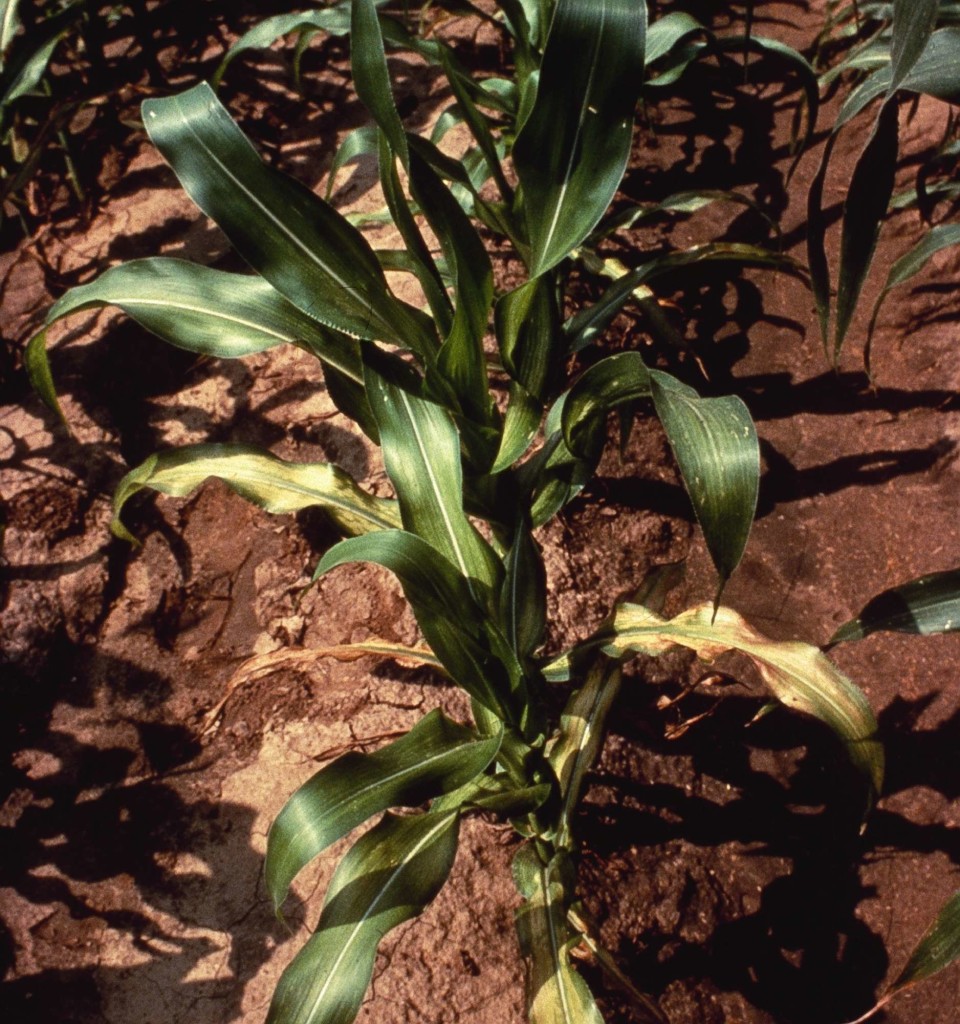Report: Demand For Zinc As Micronutrient In Agriculture Grows

Zinc deficiency in corn causes interveinal, light striping, or a whitish band beginning at the base of the leaf and extending toward the tip.
Improving diets worldwide and the need to feed the more than 9 billion people who are expected to inhabit the earth by 2050 are driving greater global demand for zinc chemicals to use as micronutrients in agricultural crops. This holds especially true for chemicals such as zinc oxide, zinc sulfate and zinc chloride, according to a new global market research report released by IHS, the leading global source of critical information and insight.
“Zinc is an essential element for animal and plant life, and zinc deficiency, particularly in children, has become such a threat to public health that many countries in zinc-deficient regions are implementing programs to increase the use of zinc in fertilizers,” said Stefan Schlag, director of specialty chemicals at IHS Chemical. “We see this trend contributing to healthy demand growth for zinc chemicals during the next few years.”
“Total demand for zinc-derived chemicals is currently 1.5 million metric tons (MMT) (expressed as Zn equivalents),” Stefan said. “However, by 2018, the end of the study period, we expect demand for these chemicals to exceed 1.8 MMT Zn. About 400 thousand metric tons (TMT) of that demand will be tied to agricultural demand, most of it in the form of zinc sulfate.”
In 2012 and 2013, for example, China included zinc fertilizer in the national fertilizer recommendations for major crop production, Schlag said. “This project will help bring zinc fertilizer into the mainstream of balanced fertilizer management and significantly increase zinc fertilizer production and use in China by an additional 50,000 metric tons to 100,000 metric tons annually, according to our estimates at IHS Chemical.”
Schlag co-authored the IHS report, entitled the IHS Chemical Economics Handbook: Inorganic Zinc Chemicals. In it, he says the biggest demand growth sector for zinc chemicals during the period 2013 to 2018 will be for fertilizer production for animal feed and human food production. Agricultural applications of zinc chemicals in 2013 accounted for more than 290 TMT (Zn), with growth forecast at about 6% from 2013 to 2018.
Zinc deficiency is the one of the most common micronutrient deficiency problems globally, especially in cereal grain crops, which comprise the dominant food source for much of the population in developing countries. Nearly 50% of cultivated soils worldwide currently contain low amounts of plant-available zinc, and by 2018, said IHS, this could reach 65%. Plants growing in the potentially zinc-deficient soils have reduced productivity and contain very low concentrations of zinc in the edible parts.
In many studies, including projects in Brazil, China, India and Turkey, agricultural yields were increased in zinc-deficient regions by adding zinc to standard fertilizers and premixes. According to IHS, field trials proved that zinc fertilizer application increased crop yields from 8 percent annually to 20 percent annually, which increased zinc content in grains by 20 percent to 40 percent. This development also improved the soils’ nitrogen fertilizer uptake and increased economic returns for farmers.
Said Schlag, “With the amount of arable land per-person declining and population expanding, global crop-yields must increase to meet food production needs. As a result, we are seeing the most dramatic demand increase for zinc chemicals in fertilizer and agricultural production. There are additional options to address crop yields, including improvements in seed technology and improvements in crop protection. However, the greatest potential for improvement is fertilizers and micronutrients, and in particular, zinc, which is why our forecast for demand growth is so bullish on the agricultural industry.”






